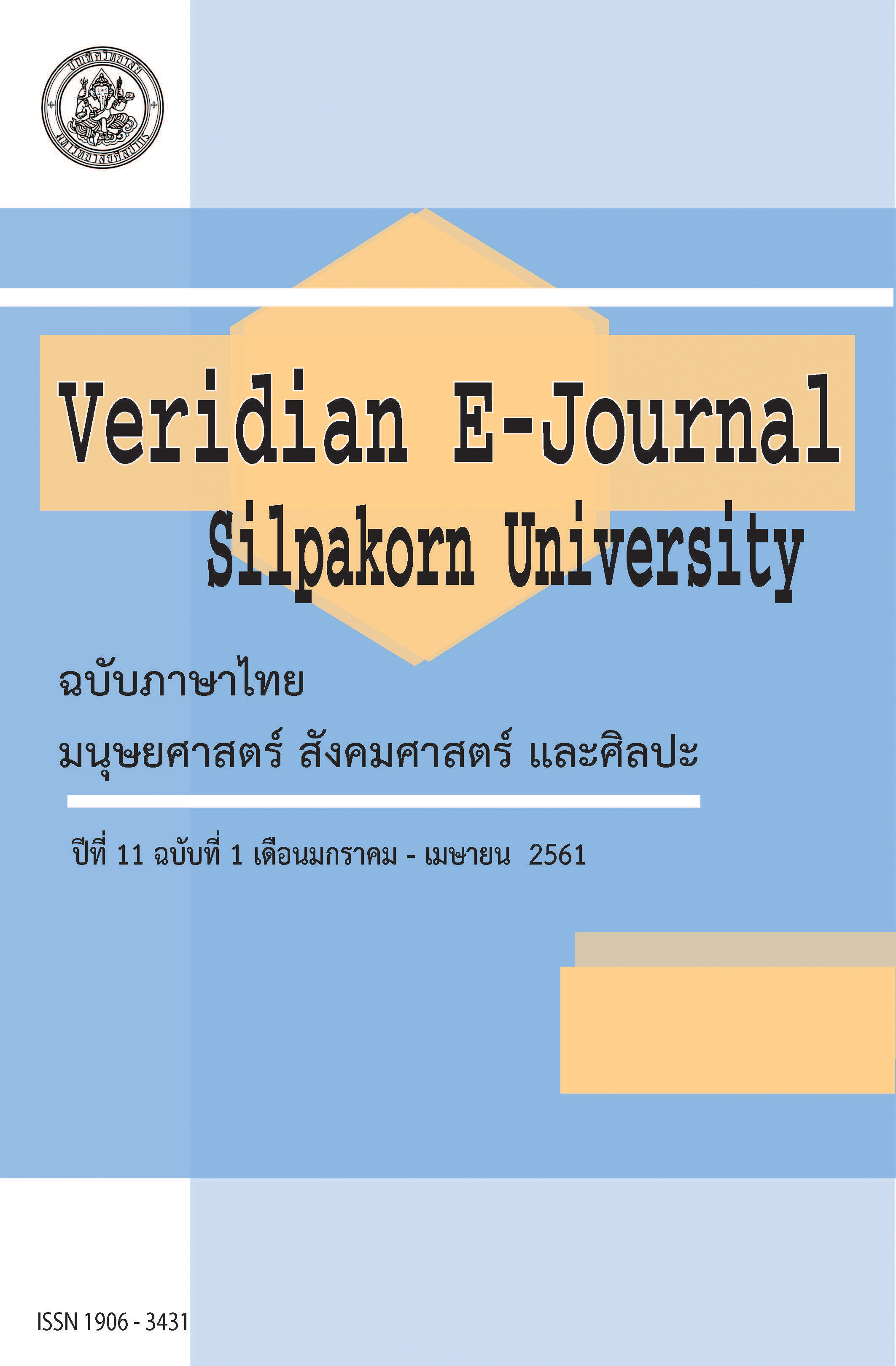แนวทางการออกแบบโฆษณาทางแฟชั่น : การสร้างสรรค์หลักการการออกแบบโฆษณาทางแฟชั่นจากการรับรู้เสียงดนตรีเพลงและท่าทางการแสดงท่าใบ้ (Guidelines for Fashion Advertisement: The Creation of Principles for Fashion Advertisement with Music Perception and Sign Languag)
Main Article Content
Abstract
ปัจจุบัน (พ.ศ.2560-2562) สภาวะเศรษฐกิจทางการตลาดสินค้าแฟชั่นมีการแข่งขันของตราสินค้าในตลาดสูง งานวิจัยนี้มีวัตถุประสงค์เพื่อสร้างสรรค์หลักการและแนวทางการออกแบบโฆษณาสินค้าทางแฟชั่น ด้วยการนำแนวคิดและทฤษฎีด้านการรับรู้ทางดนตรีเพลงและท่าทางการแสดงท่าใบ้ ผสมผสานกับแนวคิดด้านบุคลิกภาพตราสินค้าแฟชั่น โดยศึกษาข้อมูลปฐมภูมิและทุติยภูมิ รวมถึงการศึกษาวิเคราะห์ เชื่อมโยงกับปัจจัยเรื่องอื่น ๆ ที่เกี่ยวข้อง ได้แก่ หลักการทางการตลาดสินค้าแฟชั่น และการสร้างสรรค์งานออกแบบโฆษณาทางแฟชั่น ผู้วิจัยใช้วิธีการวิจัยเชิงคุณภาพด้วยการสัมภาษณ์เชิงลึกกับผู้เชี่ยวชาญในด้านการสร้างสรรค์งานโฆษณา ด้านการตลาดสินค้าแฟชั่น และด้านดนตรีเพลงและการออกแบบท่าทางการแสดงท่าใบ้ ร่วมกับการวิจัยเชิงปริมาณโดยการใช้แบบสอบถามและแบบทดสอบร่วมกับกลุ่มตัวอย่าง 15 คน ที่ถูกคัดแยกตามบุคลิกภาพทางแฟชั่น จากการศึกษาพบว่า กลุ่มผู้บริโภคสินค้าแฟชั่นที่มี เพศ อายุ และการศึกษา ที่แตกต่างกัน แต่มีบุคลิกภาพเดียวกัน จะให้ความสนใจในเพลงดนตรีและท่าทางการแสดงในงานโฆษณาที่คล้ายกัน องค์ประกอบที่ทำให้เกิดความสนใจมากที่สุดได้แก่ ทำนองและ การเคลื่อนไหว โดยความสนใจนี้ยังเชื่อมโยงไปถึงความสนใจในกลุ่มสินค้าแฟชั่นที่คล้ายคลึงกันอีกด้วย และเพื่อให้ได้หลักการและแนวทางในการออกแบบงานโฆษณาทางแฟชั่นที่เหมาะสมสอดคล้องกับการรับรู้และสนใจของกลุ่มผู้บริโภคมากที่สุด ผู้วิจัยใช้การสนทนากลุ่ม (Focus Group) ในการตัดสินแนวทางด้านองค์ประกอบของรูปแบบงานโฆษณาสินค้าแฟชั่นตามความสอดคล้องระหว่างกลุ่มบุคลิกภาพและรสนิยมของผู้บริโภคกับกลุ่มดนตรีเพลงและการออกแบบท่าทางการแสดงท่าใบ้ และกลุ่มตราสินค้าแฟชั่นอีกครั้งจากคณะผู้เชี่ยวชาญ เพื่อพัฒนาสู่หลักการแยกองค์ประกอบการสร้างสรรค์งานโฆษณาสินค้าแฟชั่นต่อไป
At the present time (2017-2019), the fashion industry has become highly competitive in terms of fashion brands. This research aims to construct principles and guidelines for fashion advertisement with the application of music perception and sign language, combined with the concept of brand personality. Primary and secondary data were gathered and studied. Analysis was conducted on other factors including fashion marketing principles and fashion advertising design. Qualitative research was conducted using in-depth interviews with experts in advertising design, fashion marketing, and music and sign language. Quantitative research was conducted using questionnaires and assessments with a sample group of 15 people, which was categorized into 5 fashion personalities. Findings suggest that fashion consumers of different gender, age, and education but same fashion personality are interested in the same music and sign language in an advertisement. The important elements that induce the interest are rhythm and movement. Moreover, this leads to a common interest in fashion products. In order to ensure accordance among the three groups including the personality and preference of the target group, the music perception and sign language, and the fashion brands, the researcher relied on a focus group discussion with experts to determine the elements of fashion advertising design. The result would then be utilized in the creation of fashion advertisement principles later on.

